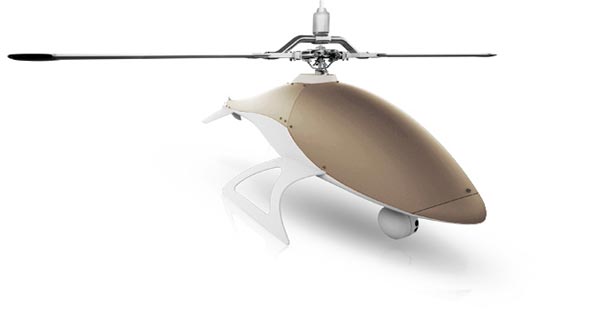The Swiss company Unmanned Systems is showing a model of its Orca rotary-wing unmanned air vehicle at the Dubai 2011 Airshow. The Orca employs a revolutionary tip-jet propulsion method that not only improves performance in many key areas, but also overcomes many of the operational problems encountered with conventional propulsion methods AIN reports.

Orca’s system employs a turbine engine rated at 215 hp that rotates with the rotor blade. The jet blows air at 700-degrees (C) through flexible ducts to the hollow rotor blades, then blowing through angled tip nozzles to provide thrust. Reactive movement is eliminated so there is no requirement for a tail rotor, and there is no need for clutch, gearbox or transmission, significantly reducing weight.
According to the Swiss company, this propulsion systems has numerous benefits, not least of which are low running costs and high availability. At a 772-pound maximum take off weight, the Orca is designed to lift up to 265-pound payload, flying at an altitude of up to an 1,500-foot ceiling. Typical endurance on 33 gallons of fuel is 2.5 hours.
The company is currently testing the propulsion system on a tower, and expects to conduct the first flight of the Ocra in April next year. Initially the Orca is being developed as an ISR platform, carrying a FLIR Ultra Force 350 EO/IR payload as standard. In Dubai the company highlights the ability of the UAV to operate with great reliability in desert conditions, as its enclosed propulsion system is impervious to dust and sand. Nevertheless, when cold weather operations are concerned, the blowing of hot air through the hollow blades eliminates any icing issues.

Following close behind the ISR version will be a maritime surveillance model. A weaponized version is also being planned, to be ready in 2013. This would be a larger air vehicle with a 2,095- to 2,205-pound mtow, of which about half would be payload. (AIN Online)
















